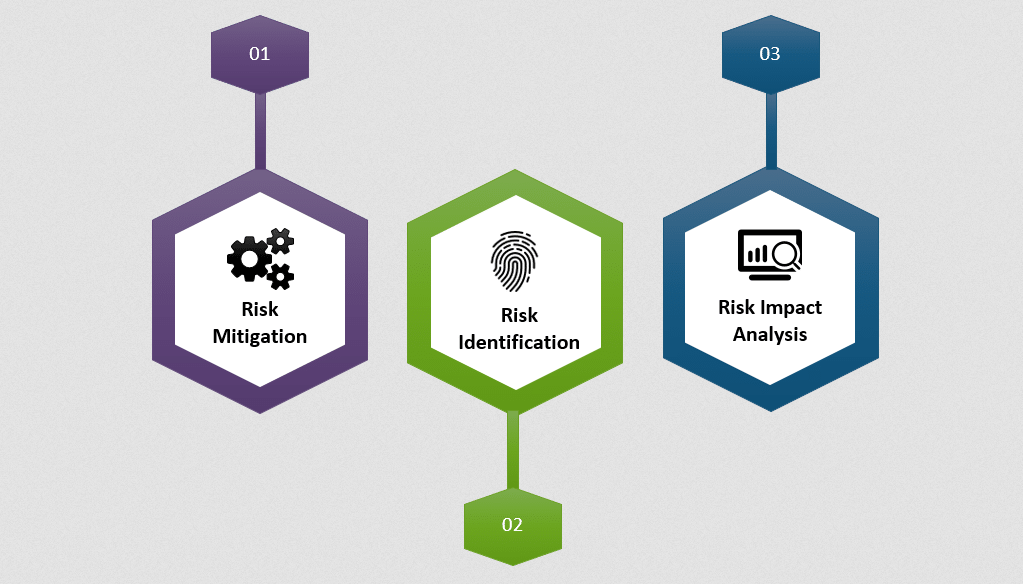Risk Management in Testing

What is Apache Hive?
3rd February 2020
Database Partitioning Techniques
6th February 2020Any application developed without paying attention to the potential risks can lead to the rise of multiple errors and bottlenecks. Let us know why Risk Management is important in Software Testing!
What is Risk Management?
Risk management in both test planning and execution phase are hot topics of discussion today, the main reason being that if applied properly the chances for software development and execution failures gets drastically reduced.
The main phases of risk based testing are:
- Risk Mitigation
- Risk Identification
- Risk Impact Analysis

Risk management in Software Development Life Cycle
The entire job of risk management is sub-divided into three important steps described below in detail:
Risk Identification
Risk Identification is the simple identification process which lists out the probable factors that may disrupt the smooth functioning of the software. This listing process includes all possible instances, including external errors that might disrupt the functioning of the software. The most identified risks are late errors, lack of defined scopes, unavailability of independent test environment and work spaces, tight test schedule due to impending demand, etc. The identification process is a pre requirement often to ensure that the software has authenticity in the testing reports. The developers are also informed about the risk factors to avoid such loopholes in the future.
Risk Impact Analysis
Once the Risk is identified, we move on to Risk Impact analysis this step involves classification of the identified risks based on its probability and force of impact on the whole project. The three classifications for impact analysis are High, Medium and Low. There is a systematic structure followed to analyze the risk before it gets materialized. Impact analysis is also done financially as well, because the impact in that sector can have direct results on the development of the software. The major issues such as tight testing schedule and delay caused due to design issues could be a hindrance in a major way, thus getting assigned to High category risk after Risk Impact analysis. An issue like the probability of natural disasters is classified as a low impact risk.
Risk Mitigation Process
The next is the most important step Risk Mitigation Process the idea is to find feasible solutions for the analyzed risk keeping high category risk mitigation as a priority. Finding the proper risk mitigation technique is also an important part. The techniques used should be harmless for the other stages of development. Mitigation if done successfully the chances for application gets drastically reduced. The risk mitigation factors include finding the most suitable solution that can be arranged in a limited time frame and thus not inducing a risk of delaying. For example the high risk factor of tight testing schedule, causing delay can be mitigated by informing the development and testing team to control preparation task in advance as a prevention system.
Test Execution
Risk management also sometimes extends to the test execution phase at times. Execution time risk management is a fast task to accomplish as it is constructed in a very short time frame, therefore, usually the impact analysis classifies the risk probability based on individual modules and rank them accordingly, thus making it easier for the testing team to mitigate the risk by prioritizing the module tests and finding solutions with the highest ranked module, thus saving a lot of time and energy.





